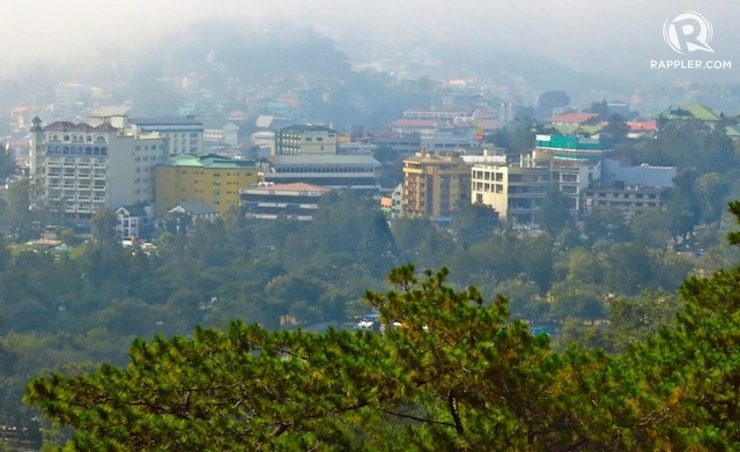SUMMARY
This is AI generated summarization, which may have errors. For context, always refer to the full article.

BAGUIO CITY, Philippines – Citing the lack of an efficient and sustained delivery of basic water services, the Asian Development Bank (ADB) has given a $250,000-grant to Baguio City to fund a feasibility study on the rehabilitation of its creeks and rivers.
Baguio City Mayor Mauricio Domogan, who made the announcement on Thursday, September 25, said the grant was awarded after the situation of an overdeveloped Baguio was presented in several international forums.
“Baguio City still lacks the ability to ensure efficient and sustained delivery of basic water services. This project hopes to enable Baguio city to shift from fragmented to integrated local water agenda and action, to be catalyzed by an integrated management scheme at the local government level,” the ADB said in its report.
In providing the grant, the ADB aims to assist the city in designing a multisectoral, multi-functional, and multilateral City Water Governance Committee for better and sustainable water governance.
Baguio City will provide a counterpart funding of $51,000 through government personnel who will conduct the study.
Domogan said urban migration and tourists flocking to the mountain resort have added to the city’s freshwater supply problem, as well as unaccounted deep wells and settlements along watershed areas, and the presence of minerals that affect water quality.
WWF-BPI Foundation study
Earlier this year, an international study conducted by the World Wildlife Fund and the Bank of the Philippine Islands Foundation among 12 Philippine cities revealed that Baguio City is the most vulnerable to climate change effects due to several factors.
The study projects that unless something is done, “by 2025, Baguio City will likely have the largest water deficit outside Metro-Manila.”
It cited the depletion of the city’s pine forest which replenishes Baguio’s aquifers, as the cause for the current inadequate groundwater supply.
Of the city’s 6 watersheds, those in John Hay and Lucnab have become inoperable due to the unregulated influx of informal settlers. The other watersheds are in Sto Tomas, Busol, Buyog, and Camp 8.
Also, the study finds that extensive real estate development in the city has led to the conversion of forested hills and previously absorptive substrates, to impervious surfaces characteristic of poorly planned urbanization which impedes water recharge into the city’s natural aquifers and encourages runoff.
Data from the National Statistics Office show that the Baguio population has increased from 182,142 in 1990 to 325,880 in 2010 – an increase of 143,738 inhabitants.
In 20 years, or from 1990 to 2010, population density increased from 3,186 per square kilometer to 5,668 per square kilometer. Of the 4 cities cited in the study, Baguio City has the highest population density.
The study also shows that housing units have increased from 13,471 in 1990 to an estimated 34,247 in 2010.
Bulk water system
The city government has been eyeing the establishment of a bulk water system since there are no more water sources within Baguio. The Baguio, La Trinidad, Itogon, Sablan, Tuba, Tublay (BLISTT) areas have been proposed to be tapped as a water source for the project.
At present, the Sto Tomas rain basin remains to be the biggest water impounding area aside from the Busol, Buyog, and Camp 8 watersheds. The rain basin, however, has to be rehabilitated because aside from the presence of cracks, stored water easily evaporates.
The Bulk Water Supply Project, conceptualized in 1997, was envisioned as a joint venture undertaking with a private company to supply the city with its daily need of 50,000 cubic meters.
Engineer Salvador Royeca, general manager of the Baguio Water District, said they are only able to deliver 32,000 cubic meters of water to consumers out of the ideal 55,000 cubic meters daily demand. He attributed this to old pipes, leaks, illegal connections, lost meters, and other sources of systems loss.
Royeca said BWD’s systems loss remains at 40% – far from the 20% standard system loss rate for water districts set by the Local Water Utilities Administration.
He said demand increases year after year, with the daily demand of 55,000 cubic meters water rising to 75,000 cubic meters in the next 5 years. This is due to the rapid and erratic increase of migrant population in the city. Royeca said the BWD may opt to increase rates if systems loss goes unabated.
However, Royeca assured, despite this shortage in supply, the BWD is still able to cover and deliver safe and potable drinking water to 90% of its franchise area. – Rappler.com
Add a comment
How does this make you feel?
There are no comments yet. Add your comment to start the conversation.